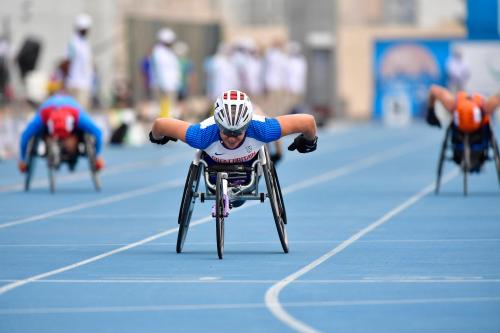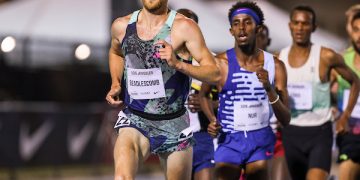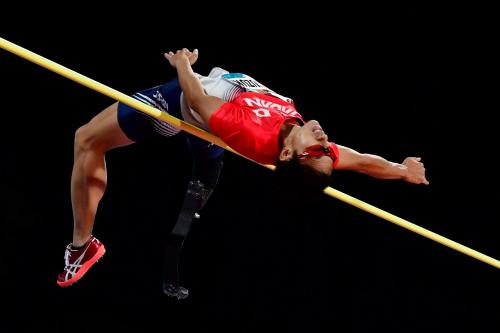 High Jump, photo / copyright by IPC
High Jump, photo / copyright by IPC
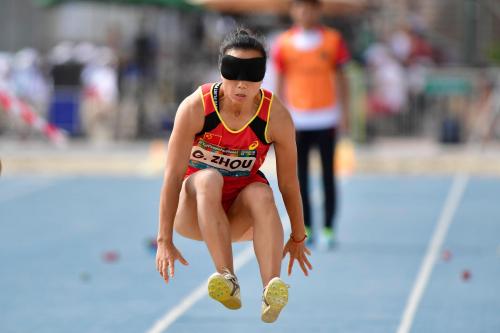 Visually impaired Long Jump, photo / copyright by IPC
Visually impaired Long Jump, photo / copyright by IPC
In this piece on the IPC Champs 2019, Stuart Weir explains the varied events in the Para Athletics movement.
Para Athletics – diversity and excellence.
If you’ve never been to a para athletics event, I suspect that you will struggle to grasp the diversity of the event. There is running, jumping and throwing like able-bodied athletics. There is also wheelchair racing. Para sport is sometimes called adapted sport and that is a good descriptor. Basically, it involves taking the core track and field disciplines and adapting them to allow athletes with varying levels and types of disability to participate in running, jumping and throwing competitively.
Wheelchair track racing, photo / copyright by IPC
Take running. If you can run, you run. If you don’t have two legs, you can run with a prosthetic. If you cannot see, you can run with a guide. If you cannot walk at all, then race in a wheelchair. Races range from 100m to 5000m – no hurdles or steeplechase. No marathon at these championships but the marathon is very much part of disability athletics. A fascinating aspect of wheelchair racing is that it is common for the same athlete to compete in 100m and distance events. Hannah Cockroft, whose two events this week are 100m and 800m, told me that she trains six days a week – three on speed and sprinting and three on strength and endurance. Events are split by classification – with visual impairment, cerebral palsy, amputee and wheelchair in separate categories and indeed with subdivisions within the categories in an attempt to create a level playing field for every athlete. This does result in a large number of races including 32 different 100m races in 17 different classifications for men and 15 for women.
When it comes to jumping, there is the long jump and high jump – no triple jump (bit like the Diamond League really!) and no pole vault. When it comes to long jump the main adaptations are for blind athletes, who are helped to find the direction by a coach or assistant shouting to guide them (See more at https://www.runblogrun.com/2019/11/2019-dubai-ipc-diary-blind-faith-the-challenge-of-writing-about-disability-sport.html ). With regard to high jump, athletes with a prosthetic either jump with it or take it off and hop.
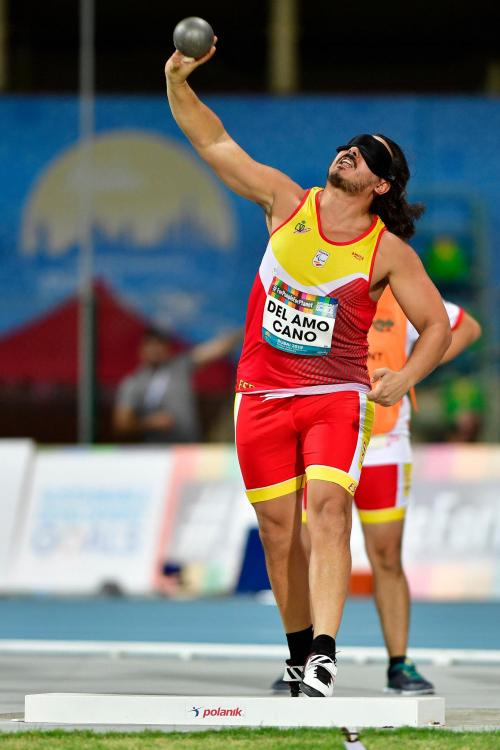 Alvaro De Amo Vero, photo / copyright IPC
Alvaro De Amo Vero, photo / copyright IPC
Disability athletes throw the javelin, discus and shot. There is no hammer but there is, in two classes, the club throw. Jo Butterfield who won a silver medal in the F51 club throw explained that her disability makes it difficult for her to grip, adding: “Imagine trying to throw something a long way when you struggle to grip it”. Athletes who normally use a wheelchair or have limited stability throw from a sitting position where they are strapped in. One difference for this category is that each athlete takes three consecutive throws in turn – instead of the normal way with each athlete throwing once in turn – to avoid the time-consuming process of strapping and unstrapping an athlete after each throw.
And remember that para athletes are just normal people who have a body that doesn’t fully function either from birth or as a result of illness or an accident. They are able to run/jump/throw because, like any athlete, they train their bodies and practice their technique. That is where the excellence comes from.
Author

Since 2015, Stuart Weir has written for RunBlogRun. He attends about 20 events a year including all most global championships and Diamond Leagues. He enjoys finding the quirky and obscure story.
View all posts

